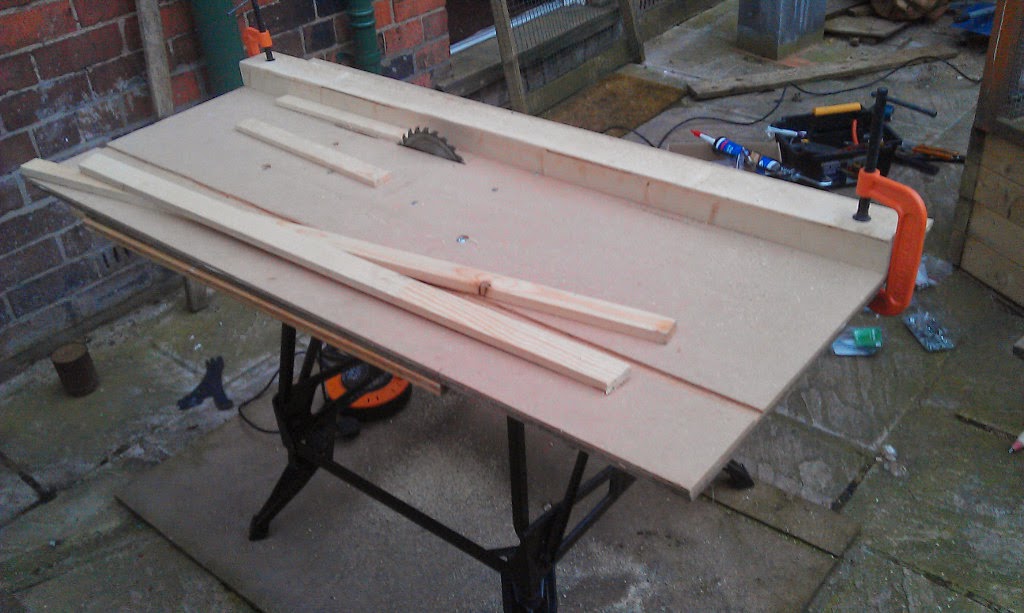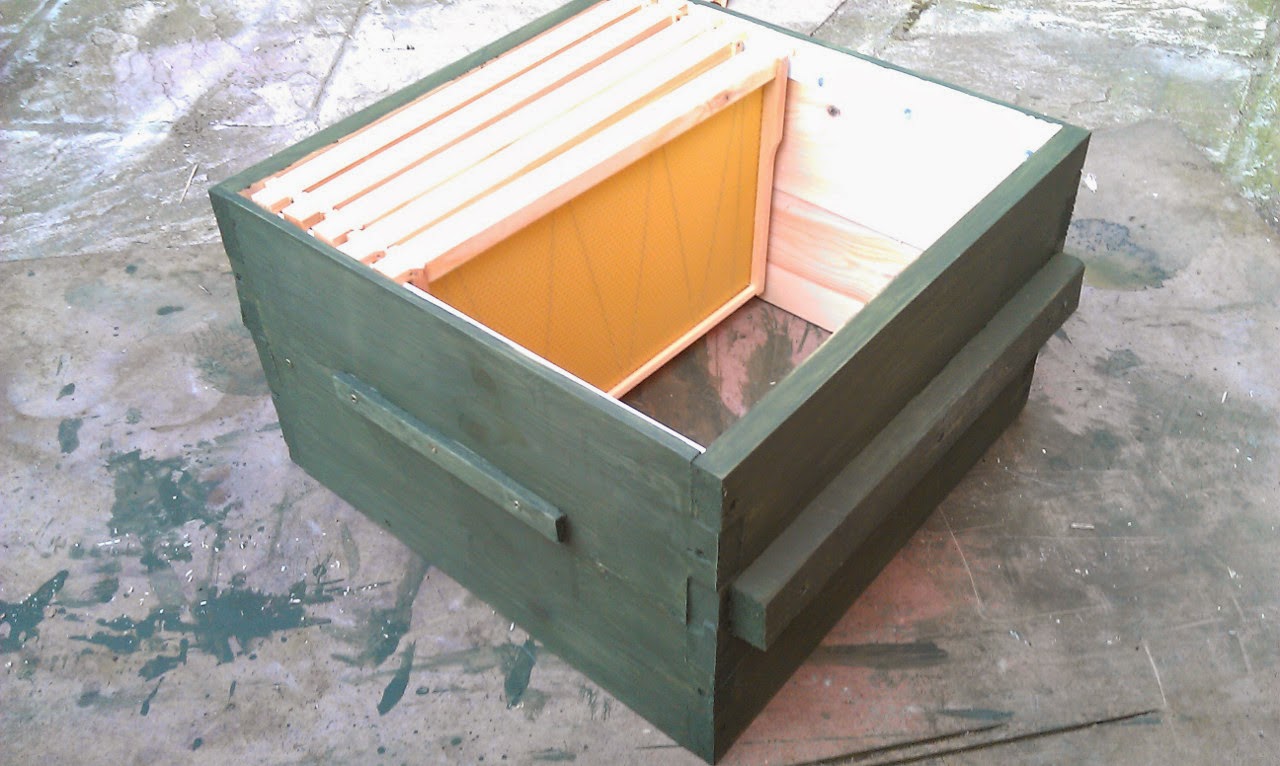To manage swarming beekeepers need to have enough brood boxes for twice as many hives as they have. After starting with two brood boxes picked up on eBay I later made two more giving me enough for both colonies. I later moved the swarm I'd
collected in July last year into one of the brood boxes giving me three full size colonies, meaning I now needed 6 brood boxes. A commercial brood box costs £40-£50 apiece and I didn't have quite that much change down the side of the sofa so I decided to make my own again.
It was a lot of hard work last time using a couple of handsaws, a plane and a hive stand stabilised with breeze blocks as a work surface. This time I figured with a workbench available things should be a lot easier. A table saw would probably help too but they're a bit pricey. I recently got a couple of Argos vouchers for making a load of money suggestions at work - things like print on both sides of the paper, yeah, not exactly rocket science is it. There wasn't enough for a table saw but there was enough to cover the
cheapest circular saw in the shop and a bit of hardware. So armed with a Challenge 160mm Circular Saw, some screws, a couple of clamps and some wood I made a saw top to go on the workbench.
 |
| Contains small parts, young children may require some supervision. |
It's a pretty easy thing to make really, and there's plenty of articles on the Internet telling you how to turn a perfectly safe circular saw into a far from safe tablesaw if you feel the urge. I made mine so that the cut depth can be altered by turning a couple of screws. The gate is just a straight piece of wood held in place by G-clamps. Underneath is some bracing to hold the saw in place, stop the tabletop from warping and to secure it within the workbench. The top itself is a piece of MDF glued to some hardboard that spend a year under the chickens. Using the saw I routed channels for a crosscut sledge but I've not got around to making that yet. One thing to remember with this is when positioning the gate it needs to be done relative to the blade rather than the table edge just in case the blade is a couple of degrees out. At the moment it has the on switch cable tied in place so when it's plugged in it keeps going. At some point I may add a foot operated deadman's switch in a nod towards safety. BTW if this inspires you to make one and you lose a finger or five I take no responsibility -just because some random posts something on the internet doesn't mean you should follow.
 |
| Looks a bit Flintstones |
As before making the sides of the brood box required joining two pieces of wood together. Previously I'd used a plane to cut the rebates where the pieces would overlap to give me sides the right height but with the new toy it was just a matter of making two cuts on each piece. If you're trying this at home remember to use push sticks - you don't want your fingers near that spinning blade. I'd originally attached a splitter to the table top, that's a piece of metal that goes behind the blade to stop cut wood trying to close around the blade. It didn't work though so I removed it. This meant that the wooden offcuts were occasionally caught by the blade and hurled across the garden. Unexpected and impressive, but a little inconvenient.
I made one brood box using wood from my local B&Q and the other using wood from my local woodshop. Pros and cons are at B&Q when the label says 22mm it means 22mm but it costs more and the wood and is warped whereas the independent woodshop uses those 'nominal' measurements were 25mm means 22mm but the wood is flat and cheaper. So obviously it's worth grabbing a tape measure and trying a smaller supplier.
 |
| It's Hip to be Square. |
I picked up enough wood and tanalised screws to make one broodbox for just under £12 from the woodshop. The rebate for the frame lugs I made using the plane -I could've done them faster with the saw but truth is I forgot about them till after I'd lugged the saw back inside and I didn't feel like hauling it out again.
Commercial frames are meant to have rebated had holds on two sides. This means they can be stacked together which is useful for commercial operations who need to move large numbers of hives about on flatbeds. I'm unlikely to ever need that facility so I just attach my handholds on the outside of the boxes, I also add a couple of smaller handholds to the other two sides to making the boxes easier to manoeuvre. They need to bear a lot of weight so need to be attached very securely.
 |
| Think I'm getting better at those corner jointy bits. |
Then it was just a case of knocking together some deep commercial frames and the boxes were good to go.




























